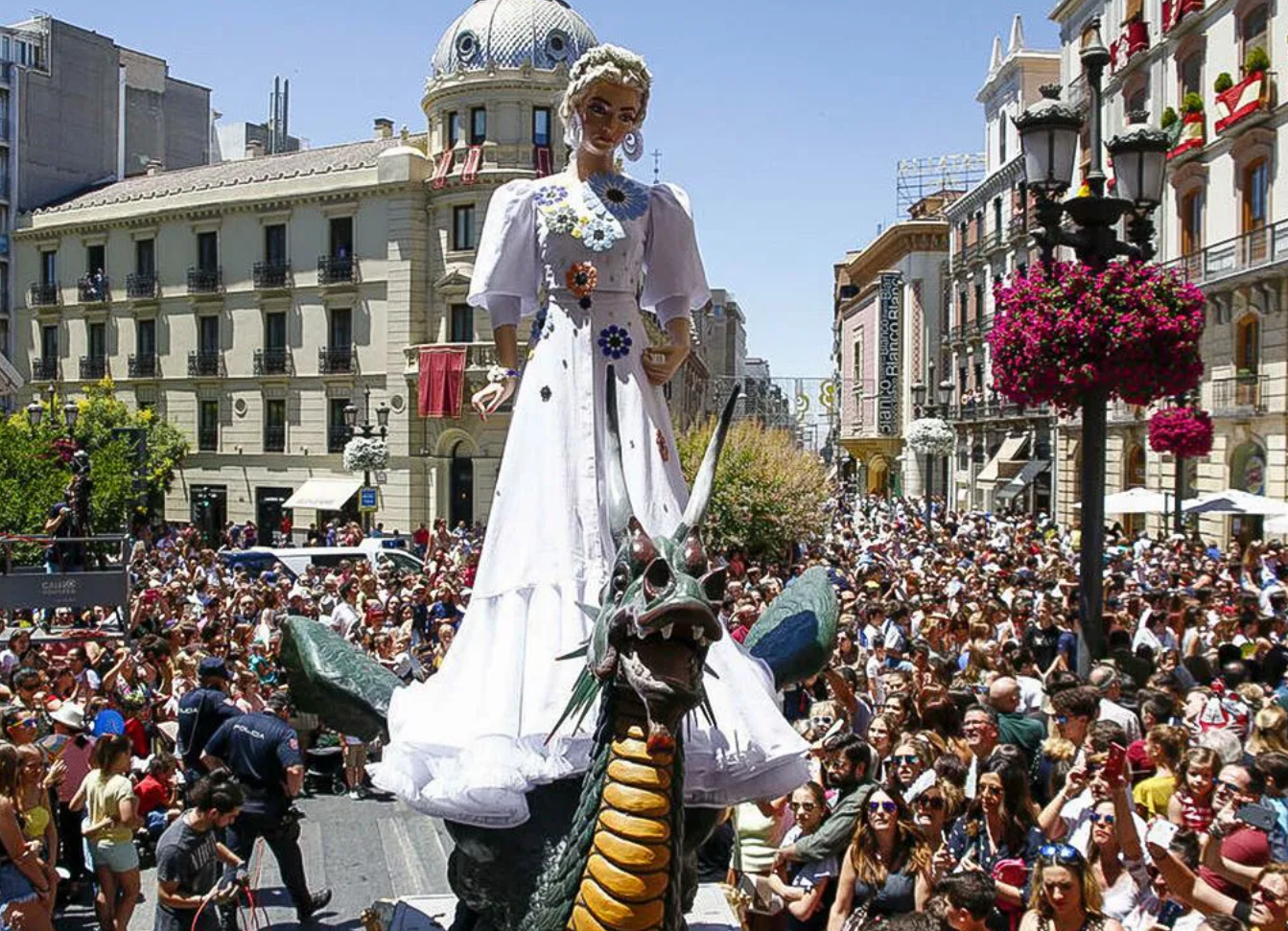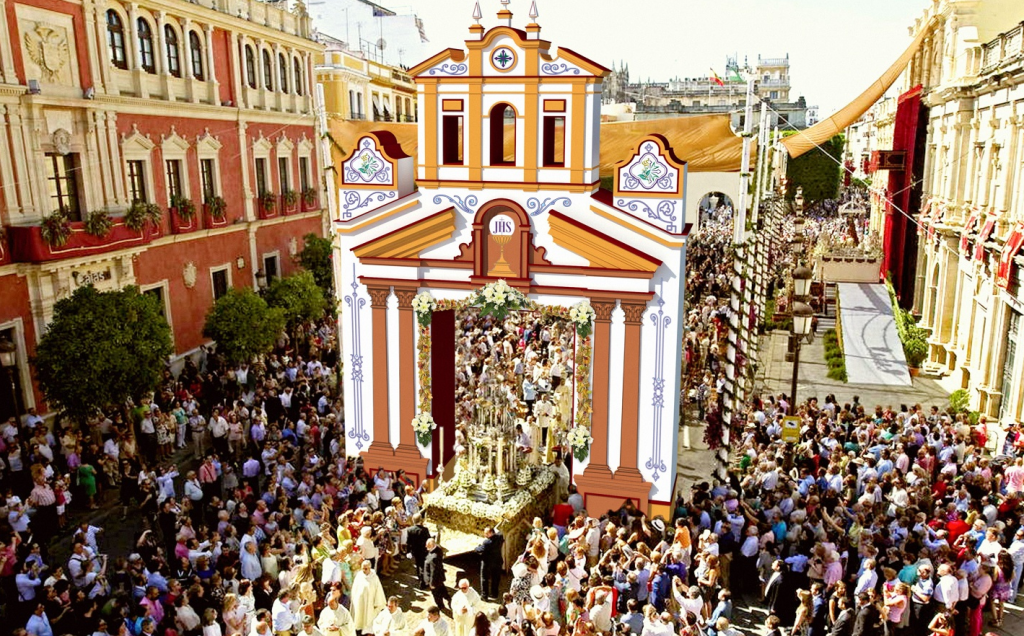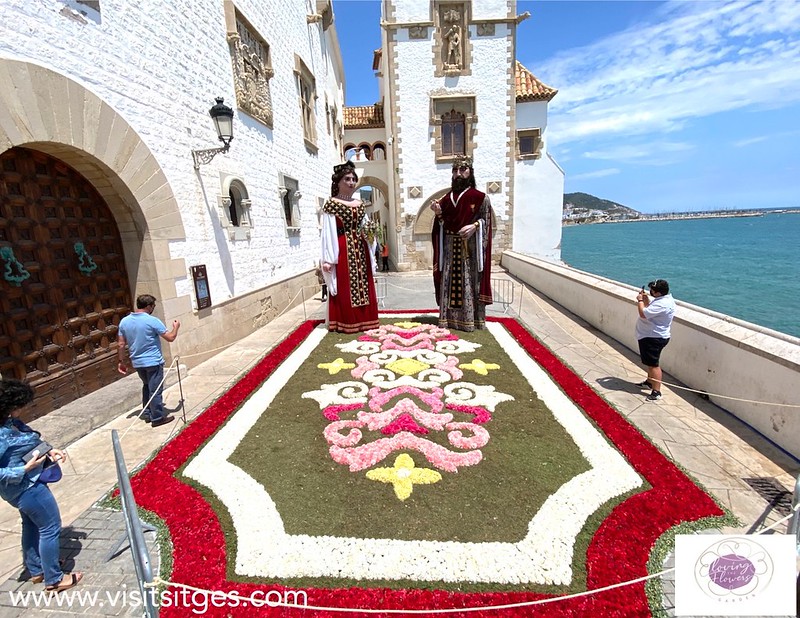Corpus Christi, also known as the Feast of the Body of Christ, is a significant religious event in Spain that celebrates the presence of the body and blood of Jesus Christ in the Eucharist. This Catholic feast is observed on the Thursday following Trinity Sunday, which is 60 days after Easter. With a rich history and deep cultural significance, Corpus Christi is celebrated with fervor and enthusiasm across Spain, with each region showcasing its unique customs and traditions.
While the entire country of Spain commemorates Corpus Christi, some regions are particularly renowned for their vibrant and elaborate celebrations:
Toledo


Toledo, the former capital of Spain, is famous for its magnificent Corpus Christi procession, which is considered one of the most important religious events in the country. The city's streets are adorned with intricate decorations, including carpets made of flowers and herbs, and colorful tapestries. The procession features a stunning Monstrance, a large gold and silver vessel containing the Eucharist, which is carried through the streets accompanied by religious and civil authorities.
Granada

In Granada, the Corpus Christi festivities last for an entire week, transforming the city into a hub of religious and cultural activities. The celebrations include processions, bullfights, and traditional dances, culminating with the main procession that features the Custodia, an ornate silver container holding the Eucharist.
Seville

Seville's Corpus Christi celebrations are marked by a solemn and majestic procession. The city's streets are lined with flowers, and altars adorned with candles and religious images are set up along the procession route. The event is also an opportunity for the city's various brotherhoods to display their sacred relics and statues.
Sitges

Sitges, a charming coastal town near Barcelona, celebrates Corpus Christi with a unique and picturesque tradition. The town's narrow streets are transformed into vibrant carpets of flowers, with intricate designs and patterns created using petals, leaves, and seeds. This beautiful spectacle attracts numerous visitors who come to admire the artistic creations and participate in the various events and activities organized throughout the week.
Local Traditions Involved in Corpus Christi
Corpus Christi celebrations in Spain are characterized by a blend of religious devotion and local customs, with each region adding its unique touch to the festivities.
-
Processions: The most common tradition associated with Corpus Christi is the procession, during which the Eucharist is carried through the streets, accompanied by religious and civil authorities, brotherhoods, and local residents. These processions often feature elaborate floats, religious statues, and beautiful floral decorations.
-
Floral Carpets: In many regions, the streets are transformed into stunning carpets of flowers, with intricate designs and patterns created using petals, leaves, and seeds. This tradition is particularly prominent in Sitges and Toledo.
-
Dancing and Music: Traditional dances and music are an integral part of Corpus Christi celebrations in many regions. These performances often have religious themes and are accompanied by local musicians playing traditional instruments.
-
Bullfights: In some regions, like Granada, bullfights are organized as part of the Corpus Christi festivities, showcasing the country's rich cultural heritage and adding a touch of excitement to the celebrations.
-
Fairs and Markets: Many towns and cities set up fairs and markets during Corpus Christi, offering local food, crafts, and entertainment. These events provide a lively atmosphere and an opportunity for residents and visitors to come together and enjoy the festivities.
Corpus Christi is a deeply significant religious event in Spain that showcases the country's devotion to its faith and its rich cultural heritage. With each region offering its unique customs and traditions, the celebrations are a testament to the diversity and unity that characterizes this beautiful nation.